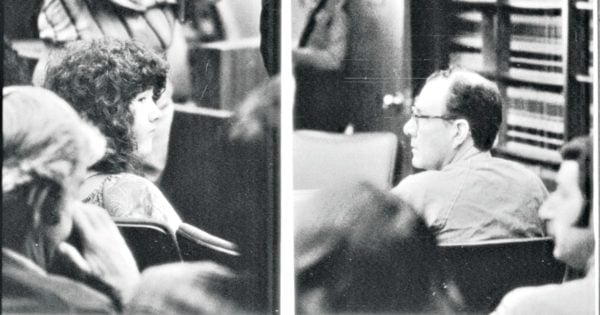CONTENT WARNING: This post contains details of violence and sexual assault.
Mary woke from her nap. As her eyes began to focus, they fixed upon a road sign that rushed past the window of the van. It looked different somehow. Wrong. The fog of sleep lifted and the 15-year-old realised. East. They were heading east.
She mustered courage and turned to the driver, a paunchy, grandfatherly man who had picked her up in Berkeley earlier that afternoon. “Look you’re going the wrong way,” she said, “and you know you’re going the wrong way.”
Just an honest mistake, he insisted, nothing to worry about. He’d just have to stop briefly to relieve himself, then they could continue on their journey to Los Angeles.
They drove for a short time, then the van peeled off the freeway down a side road that seemed to lead toward the canyon. Mary’s instinct overpowered her naïvety. The area was isolated and the road deserted. She was a prisoner.
‘I’m young; he’s old,’ she thought, her mind racing. ‘I’m healthy; he’s not.’ She could outrun him, she could get away, get help. But she’d need to tie her loose shoelace if she had any hope.
Once he’d closed the door behind him she opened hers, and bent down toward her foot.
Then came the blow of the sledgehammer.
Emily Webb goes inside Australia’s most chilling murders. Post continues…
It was 1978. Mary Vincent had done what many teens had before and many have in the decades since. She’d run away from home.




Top Comments
I can't imagine being the holiday makers who happened upon Mary that night. I am sure that there isn't a day that goes by that they don't relive that night. I'm sure that it was like a scene from a slasher film. I have no clue how Mary was.able to summon the ability to get back up the side of that cliff. It shows just how great our desire to live is. The fact that a 15 year old in that position had the ware with all to rub her stumps in the dirt to stem the blood loss. I just can't fathom how anyone is evil enough to do to Mary what that monster did to her. It's honestly one of the most horrific crimes I have ever heard of. Personally if it were me that this happened to I wouldn't have wanted him to get the death penalty nor life in prison. I would have wanted him to endure exactly the same thing that he did to me. These disgusting monsters have more rights that the rest of us law abiding citizens. Not sure why people think that lethal injections are cruel and unusual punishment yet they have normally killed in cold blood themselves. In this particular case the brutality and torturous things he did to Mary and then he gets to either die of natural causes or lethal injection. He didn't afford those options to Mary yet he died a lot more peacefully than he left her to die.
I have never felt so much disgust and repulsion to a thing (I refuse to call the attacker a person). That poor, poor girl.